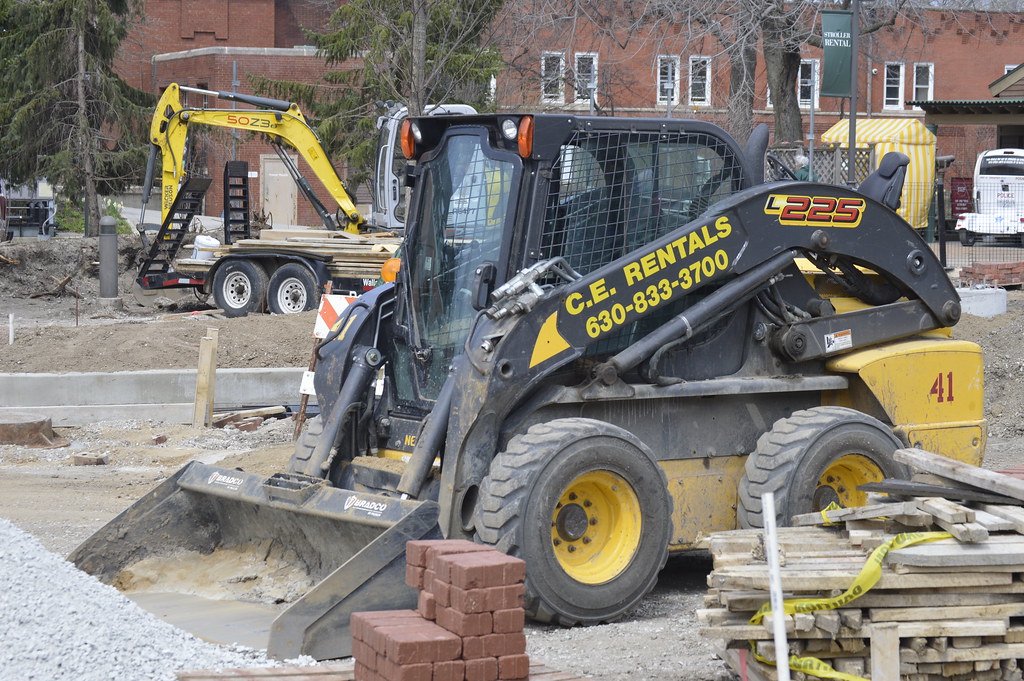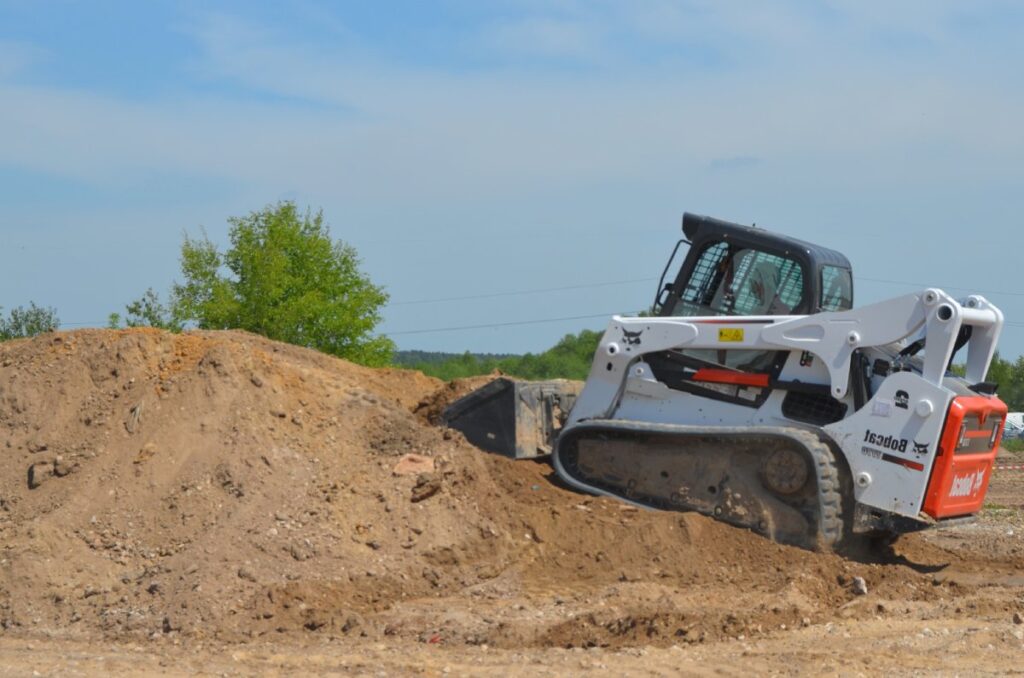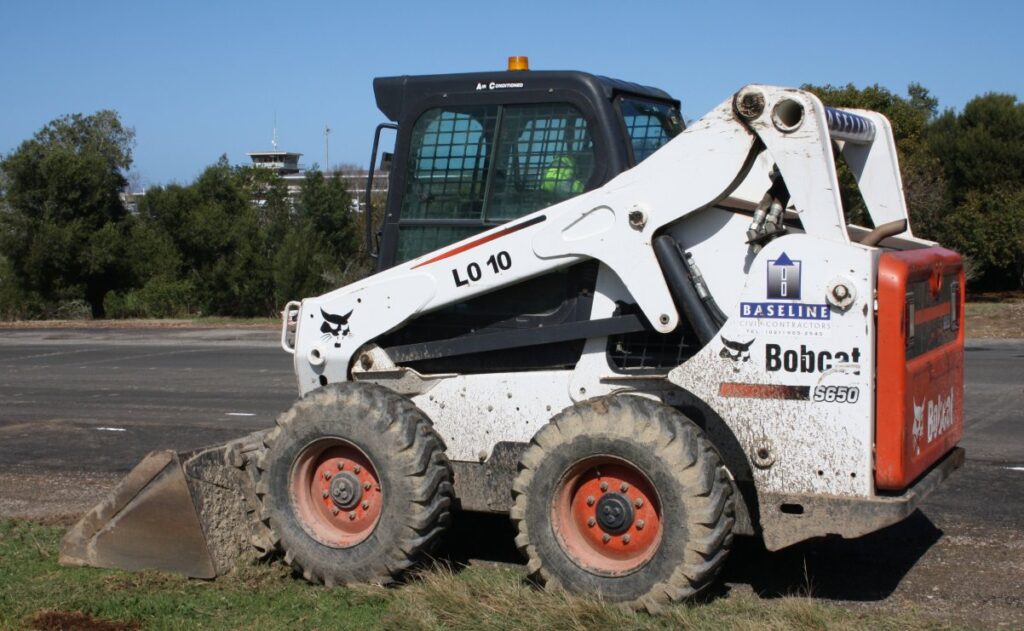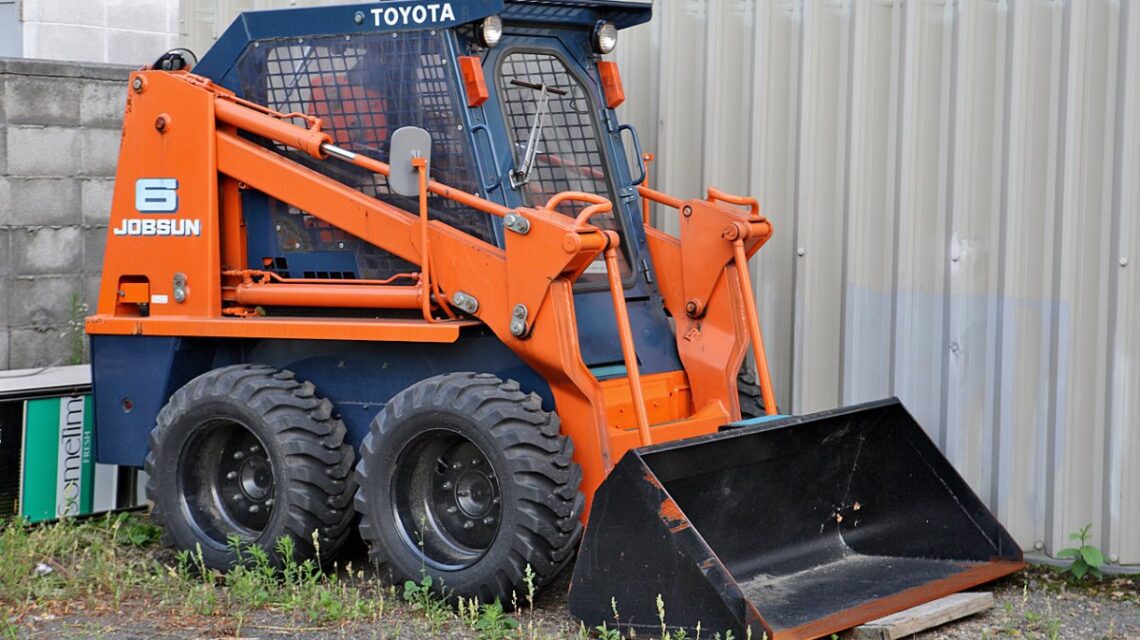If you are planning some DIY construction or extension work on your property, you’re going to need to familiarise yourself with a lot of the equipment necessary to make it happen. For example, how familiar are you with a skid steer?
If you are building a conservatory or landscaping your garden, you’re likely going to need this piece of equipment. But, what is a skid steer loader and how does it work? Are skid steers difficult to operate? And what other names do they go by?
Read on and we’ll tell you everything you need to know on these handy machines…
What is a skid steer loader?

A skid steer (aka Bobcat, skid loader or wheel loader), is a compact, multipurpose construction machine typically used for digging and excavation work.
This lightweight and manoeuvrable machine uses its arms and all manner of different tool attachments for a wide variety of construction and landscaping jobs.
How does a skid steer loader work?

The average skid steer loader is either on four wheels or two tracks. It has front and back axles that automatically synchronises the machines movements, however, drivers can operate each of them separately as well.
While the wheels remain straight and have a fixed alignment, the skid steer operator can rotate the machine by increasing the speed of the track or wheels on one side.
This function is that gives the “skid steer” its name – given that in order to steer it, the wheels have to effectively skid – rather than rotate.
Again, the skid steer loaded can be customised with a wide variety of different attachments – depending on the intended function.
The standard piece of equipment that comes with a skid steer is a ‘bucket’. This is used for excavation, clearing dirt and debris, and transporting various construction materials (e.g., multiple bags of cement in one trip).
A skid steer can be used for the following jobs:
- Snow clearance: using the bucket to scoop snow or a ‘snow plough’ attachment to scrape the streets clean.
- Excavation: a skid steer is excellent for all excavation tasks and can benefit from a number of excavation attachments, such as rippers, tillers, wheel saws, and trenchers.
- Construction: skid steers are very commonly found on construction sites and can help speed up many of the processes involved significantly. For example, a skid steer can be fitted with a cement mixer attachment or a pavement miller (to name a few).
- Landscaping: skid steers are excellent landscaping tools and can be fitted with anything from stump grinding equipment, wood chippers, trench-digging tools, and so much more.
Are skid steers hard to operate?

Skid steers do look rather complicated to use, however, they are actually relatively straightforward to operate. That said, while they are easy once you know how, there is a fair amount of practice involved. Here’s a brief guide on how to operate a skid steer:
- Skid steers are typically started up with an ignition key (though some newer models have keyless starter buttons).
- For safety, skid steers have a ‘parking lockout’ system that will automatically turn on once you start the ignition. As such, there are certain switches / toggles with clear lock symbols that must be switched on before operating the machine.
- The skid steer and bucket is operated using two hand joysticks on the left and right of the console. The left joystick is the driving controls, with the right operating the boom / attachments.
Left joystick controls:
- Push forward drives the skid steer forward.
- Pull back puts the skid steer in reverse.
- Push left turns left.
- Push right turns right.
Right joystick controls:
- Pull back raises the boom.
- Push right opens the bucket / attachment.
- Push left closes the bucket / attachment.
- Push forward lowers the boom.
As with any new piece of equipment, you’ll likely be overwhelmed by all the switches and gauges glaring at you. Here are some notable features to expect when you climb inside a skid steer for the first time:
- Fuel gauge
- Engine coolant temperature gauge
- Auxiliary hydraulic override switch
- High flow switch
- Hydraulics OFF indication
- Hydraulic oil temperature indicator
- Water-in-fuel indicator
- Parking brake indicator.
Of course, the above information is merely a brief introduction to a skid steer and what to expect when starting the ignition. Ultimately, before operating one yourself you should seek proper training to ensure you can use it to its full potential without injuring yourself or causing any accidental damage to your property.
Additionally, whether renting or buying a skid steer of your own, it’s worth looking into how you will transport it before you commit. For example, if you want to buy a skid steer for your new landscaping business, you should invest in a Bobcat trailer by SureWeld or something of a similar quality – that way, moving it between gigs will be easy.
What is another name for a skid steer?

Skid steers are often called skid loaders, wheel loaders, and skid steer loaders, however, one of the most common names for the machine is: ‘Bobcat’.
The reason why skid steers are commonly called Bobcats is because Bobcat is one of the most famous construction equipment manufacturing brands and is renowned for making the best skid steers in the industry.
Ultimately, there is no difference between ‘skid steer’ and a ‘Bobcat’. They both refer to the same piece of equipment.
Conclusion
To recap:
- A skid steer (aka Bobcat, skid loader or wheel loader), is a compact, multipurpose construction machine typically used for digging and excavation work.
- Skid steers have two joysticks, one controlling the wheels / direction, the other controlling the boom and bucket / attachments.
- Skid steers aren’t too difficult to operate but do require some guidance and practice. They’re easy to master.
- Skid steers are often referred to as Bobcats.



